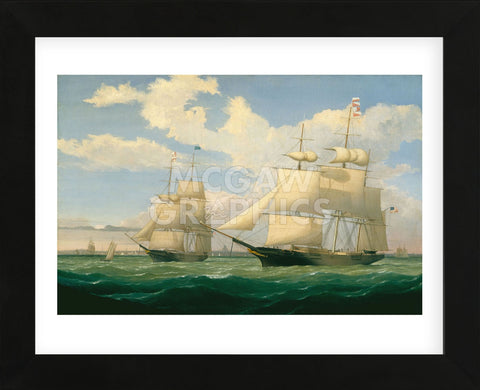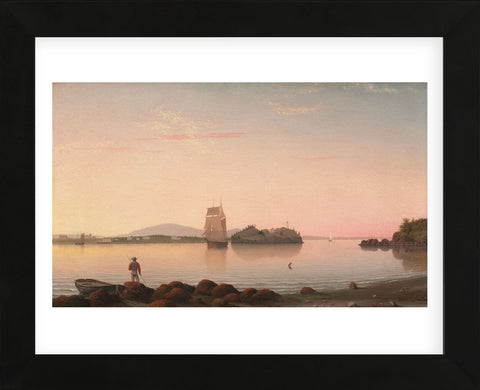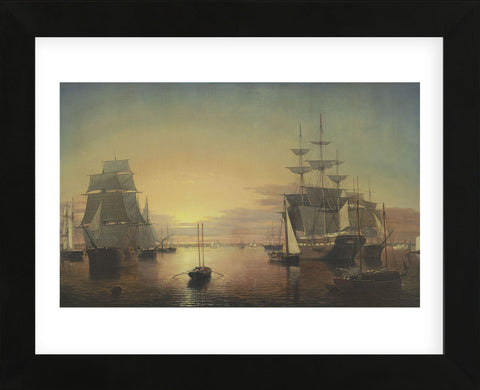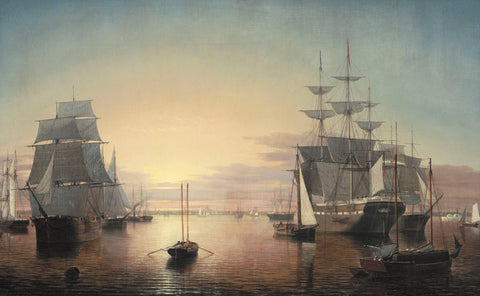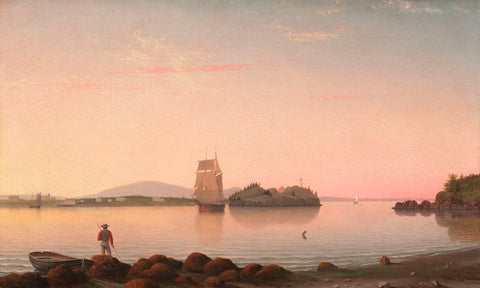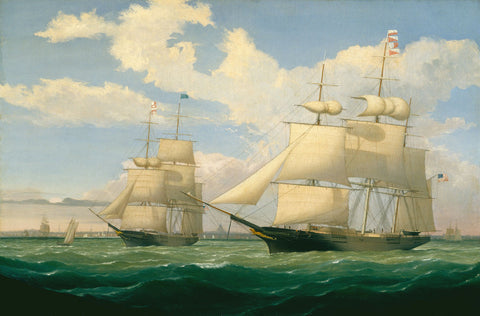Fitz Hugh Lane
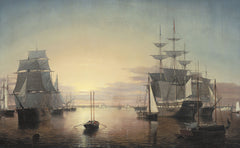
Fitz Hugh Lane was born in Gloucester, Mass., on Dec. 19, 1804. At the age of 2 he contracted polio, which left his legs paralyzed for life. As a youth, he sketched the Massachusetts coastline around Cape Ann.
In the mid-1830s his talents came to the attention of the eminent lithographer William Pendleton, who invited Lane to become an apprentice in his Boston firm.
Pendleton's shop provided Lane with his only formal training in art. Lane produced several lithographed business cards and music-sheet covers. In 1837 he did his first town views, including the National Lancers on the Boston Common. During this time he also saw exhibitions of 17th-century Dutch art at the Boston Athenaeum, as well as the city and harbor views then being painted by the English artist Robert Salmon. These provided a stimulus for Lane's own early paintings.
Lane traveled back and forth between Boston and Gloucester during the late 1830s and early 1840s, then settled permanently in Gloucester in 1848. He did several paintings and lithographs of Gloucester which show a telling sense both for specific details and general effects of light and atmosphere. He was fascinated by the myriad activities along the harbor front and on the water, as revealed in his 1844 View of Gloucester. The painting was subsequently redone as a lithograph.
In the summer of 1848 Lane made his first cruise along the Maine coast. Thereafter, he and various friends returned almost annually to explore the coast of Penobscot and Blue Hill bays and Mount Desert Island. Lane now began to paint quiet, evocative views, and he preferred to depict the transitional hours of the day, such as sunrise and sunset, rather than to fill his pictures with people, as he had done earlier. He applied his paint more thinly and used a glazing technique to create effects of serenity and stillness. Occasionally a contemplative figure appears, to reinforce the sense of man's spiritual harmony with nature.
All of Lane's later work possesses this aura of calm and spaciousness. He painted two pure landscapes near Gloucester in 1863, possibly under Martin Johnson Heade's influence. For the most part, however, Lane's life and art were remarkably self-contained, although his light-filled canvases forecast the direction of American landscape painting in subsequent decades. He remained actively at work up to the time of his death on Aug. 13, 1865.



